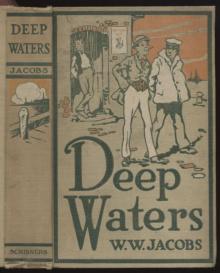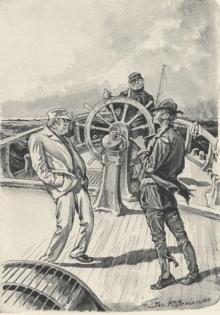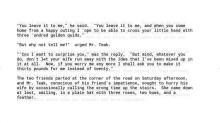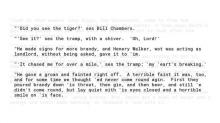_preview.jpg) Sailor's Knots (Entire Collection)
Sailor's Knots (Entire Collection) The Monkey's Paw
The Monkey's Paw Little Masterpieces of American Wit and Humor, Volume II
Little Masterpieces of American Wit and Humor, Volume II Odd Craft, Complete
Odd Craft, Complete The Lady of the Barge and Others, Entire Collection
The Lady of the Barge and Others, Entire Collection Deep Waters, the Entire Collection
Deep Waters, the Entire Collection Three at Table
Three at Table Light Freights
Light Freights Night Watches
Night Watches The Three Sisters
The Three Sisters Ship's Company, the Entire Collection
Ship's Company, the Entire Collection His Lordship's Leopard: A Truthful Narration of Some Impossible Facts
His Lordship's Leopard: A Truthful Narration of Some Impossible Facts Fine Feathers
Fine Feathers My Man Sandy
My Man Sandy Self-Help
Self-Help Captains All and Others
Captains All and Others Back to Back
Back to Back More Cargoes
More Cargoes Believe You Me!
Believe You Me! Keeping Up Appearances
Keeping Up Appearances The Statesmen Snowbound
The Statesmen Snowbound An Adulteration Act
An Adulteration Act The Old Soldier's Story: Poems and Prose Sketches
The Old Soldier's Story: Poems and Prose Sketches Husbandry
Husbandry Love and the Ironmonger
Love and the Ironmonger The Old Man's Bag
The Old Man's Bag Dirty Work
Dirty Work Easy Money
Easy Money The Lady of the Barge
The Lady of the Barge Bedridden and the Winter Offensive
Bedridden and the Winter Offensive Odd Charges
Odd Charges Friends in Need
Friends in Need Watch-Dogs
Watch-Dogs Cupboard Love
Cupboard Love Captains All
Captains All A Spirit of Avarice
A Spirit of Avarice The Nest Egg
The Nest Egg The Guardian Angel
The Guardian Angel The Convert
The Convert Captain Rogers
Captain Rogers Breaking a Spell
Breaking a Spell Striking Hard
Striking Hard The Bequest
The Bequest Shareholders
Shareholders The Weaker Vessel
The Weaker Vessel John Henry Smith
John Henry Smith Four Pigeons
Four Pigeons Made to Measure
Made to Measure For Better or Worse
For Better or Worse Fairy Gold
Fairy Gold Family Cares
Family Cares Good Intentions
Good Intentions Prize Money
Prize Money The Temptation of Samuel Burge
The Temptation of Samuel Burge The Madness of Mr. Lister
The Madness of Mr. Lister The Constable's Move
The Constable's Move Paying Off
Paying Off Double Dealing
Double Dealing A Mixed Proposal
A Mixed Proposal Bill's Paper Chase
Bill's Paper Chase The Changing Numbers
The Changing Numbers Over the Side
Over the Side Lawyer Quince
Lawyer Quince The White Cat
The White Cat Admiral Peters
Admiral Peters The Third String
The Third String The Vigil
The Vigil Bill's Lapse
Bill's Lapse His Other Self
His Other Self Matrimonial Openings
Matrimonial Openings The Substitute
The Substitute Deserted
Deserted Dual Control
Dual Control Homeward Bound
Homeward Bound Sam's Ghost
Sam's Ghost The Unknown
The Unknown Stepping Backwards
Stepping Backwards Sentence Deferred
Sentence Deferred The Persecution of Bob Pretty
The Persecution of Bob Pretty Skilled Assistance
Skilled Assistance A Golden Venture
A Golden Venture Establishing Relations
Establishing Relations A Tiger's Skin
A Tiger's Skin Bob's Redemption
Bob's Redemption Manners Makyth Man
Manners Makyth Man The Head of the Family
The Head of the Family The Understudy
The Understudy Odd Man Out
Odd Man Out Once Aboard the Lugger-- The History of George and his Mary
Once Aboard the Lugger-- The History of George and his Mary Peter's Pence
Peter's Pence Blundell's Improvement
Blundell's Improvement The Toll-House
The Toll-House Dixon's Return
Dixon's Return Keeping Watch
Keeping Watch The Boatswain's Mate
The Boatswain's Mate The Castaway
The Castaway In the Library
In the Library The Monkey's Paw and Other Tales Of Mystery and the Macabre
The Monkey's Paw and Other Tales Of Mystery and the Macabre